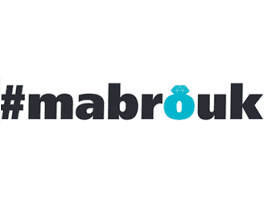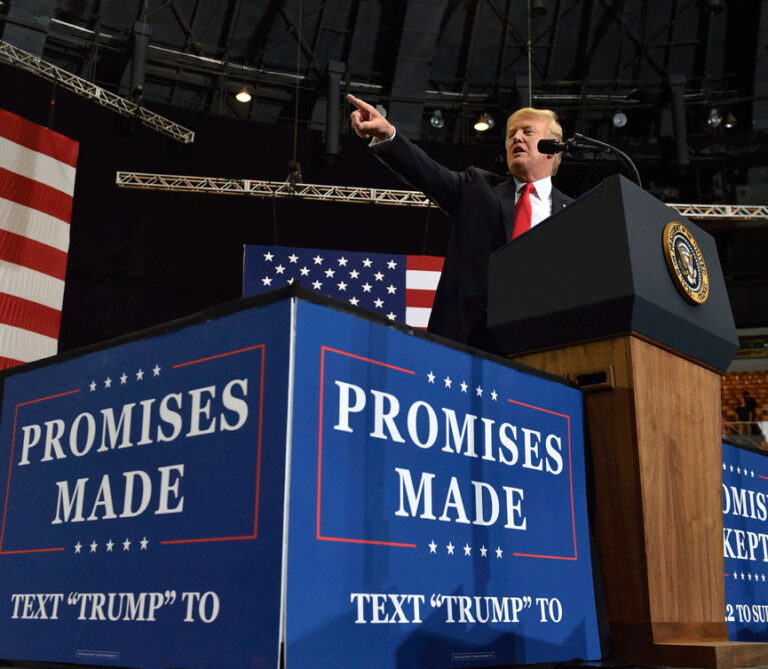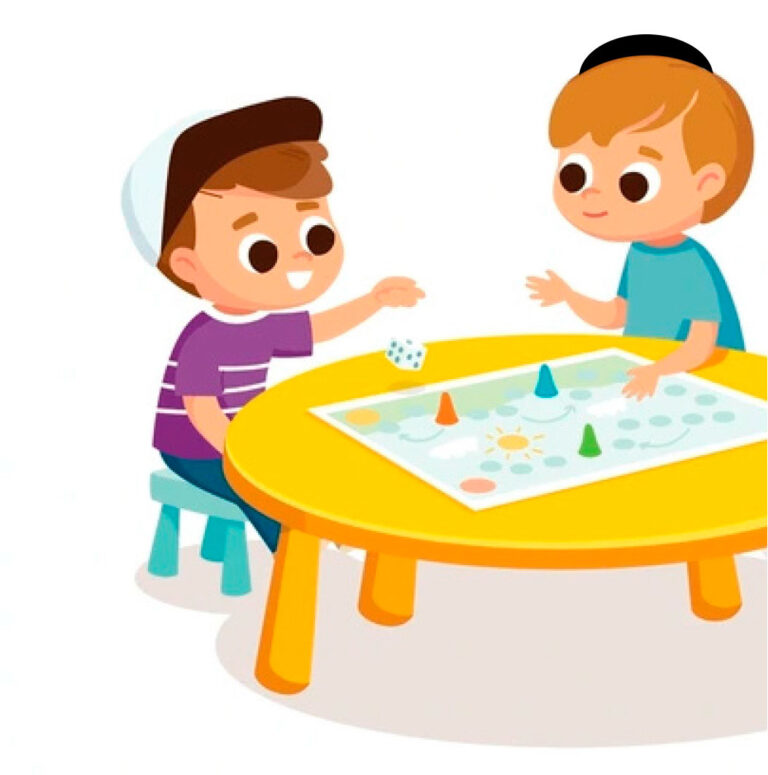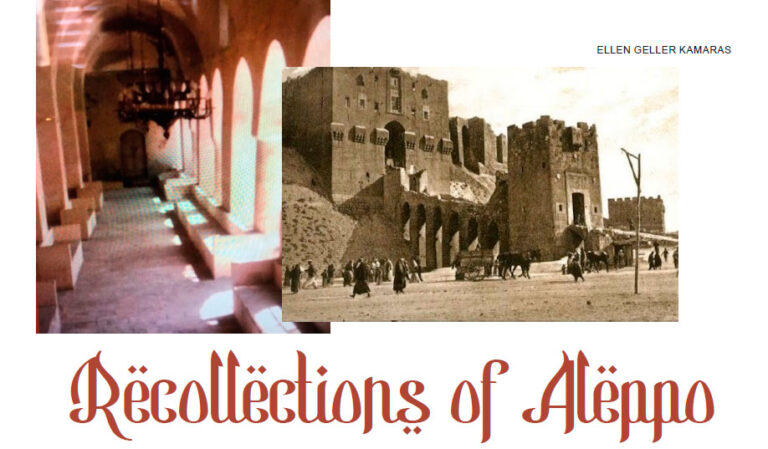Ellen Geller Kamaras
Our February issue featured an article about the ancient Eliyahu Hanavi Synagogue in Damascus, Syria. Since Assad’s departure, Jews are now allowed to visit the site once again.
Mr. Murad (Mordechai) Guindi, a member of Congregation Shaare Zion, read the article in CommunityMagazine and asked to share his personal story about another ancient synagogue, the Beit Knesset Hagadol, the Great Synagogue, in Kniss Kibereh in Aleppo. This synagogue is where the Aleppo codex was housed for over 500 years until it was removed during the 1947 Aleppo Pogrom. Murad actively led the rebuilding of this shul beginning in 1976.
I had the honor of meeting Mr. Guindi and Mr. Albert (Avraham) Zarif, a Jewish studies teacher in Syria, who was the baal koreh at the Kniss Kibereh Shul in 1976. Murad, a successful businessman and devoted member of the community, shared accounts and pictures of the shul’s history and of his life in Aleppo. His dedication to the Great Synagogue, his descriptions of the discrimination and anti-Semitism in Syria, and his struggle to move his family to America and help other Syrian Jews to leave, were truly moving.
Using false Muslim passports, Mr. Zarif escaped from Syria in August 1981 with his wife and two young daughters. They stopped in Paris for six months and then made their way to New York. Albert has been a teacher at Magen David Yeshivah since his arrival in the US and is also a hazan and baal koreh at Congregation Shaare Zion.
A Little History
Let’s add some context to the Great Synagogue’s history and the difficult environment for the Jewish community in Aleppo in the 20th century.
According to Murad, the shul was built in the 9th century BCE by Joab ben Zeruiah, the nephew of King David and general of his armies. Also known as the Central Synagogue of Aleppo, it was situated in the old part of the city in the Jewish Quarter.
Syria gained independence from France in April 1946 and the new Syrian government began its persecution of Jewish residents. Akiva Feinstein, the Haganah‘s illegal immigration operative, reported that the Syrian government fired all Jewish clerks employed by the French bureaucracy and attempted to suppress all Jewish businesses.
Murads personal narratives confirmed the oppressive economic and civil situation in Syria in the fifties, sixties, and seventies.
Reverberations of the UN Vote
In 1947 there were 10,000 Jews (dating back 2,000 years) in Aleppo at the time of the UN Resolution 181 vote that called for the partition of the British mandate into a Jewish and Arab state.
In 1947, following the UN vote, the Great Synagogue was set on fire during the Aleppo Pogrom and was mostly destroyed. Mobs attacked and destroyed shuls, five schools, an orphanage and a youth club, and Jewish stores. Many houses were burned and destroyed.
In 1948, Egypt, Syria, and Iraq took Jewish property and imposed large fines on their Jewish communities.
Exile of Jews from Aleppo
Fifty percent of Aleppo’s Jewish population left after the Aleppo riots. Most of the remaining Jews emigrated to other countries when Assad allowed the Jews to leave Syria in 1992.
After the second wave of immigration of 1992, no Jews remained in Aleppo. Only nine Jews are left in Damascus. Most are older men, who are led by Bakhour Chamntoub, 74.
Henry Guindi, Murad’s father, owned a profitable sporting goods store that was looted and destroyed in 1947. Miraculously, he found money that was hidden in a tennis ball container inside the store. He determined who the money belonged to and contacted the owner, promising to keep the funds safe for him.
Discrimination Reminiscent of WWII Germany
Murad also shared that Jews were not permitted to hold a license to drive a car. He was able to obtain a motorcycle license at the age of 18. However, he was not allowed to wear a helmet, as those were reserved for policemen. At one point, his license was confiscated by the police per the instructions of the Minister of Interior. Murad found out that his license was taken because a Damascus Jew had forged his license papers. Mr. Totach, chief of the Jewish Community in Damascus, introduced Murad to the Muchabarad, similar to the FBI, and helped him get his license back. When Murad went to the government building to retrieve his license, it was in a file six inches thick, containing information about the Guindi family.
All Jewish identification cards were stamped in red to indicate the holders were Jewish, reminiscent of the Nazi’s treatment of Jews in Germany and other countries.
The Revival of the Great Synagogue
During the 1970s, very few of the remaining Jews in Aleppo lived near the Great Synagogue. Most of the Jewish community, including Murad and his family, lived in the newer part of Djamilieh. In 1976, he was approached by his friend Albert Zarif, who was discouraged about the situation at the shul. Although he walked to the Great Synagogue to read the Sefer Torah every Shabbat, only four or five men were showing up, not enough for a minyan.
Murad asked Albert to go to shul the next day and he committed to bringing a minyan for Shabbat. He succeeded in getting ten men for a minyan that Shabbat. After the shul was repaired and expanded within the next two years, sixty percent of the community members started to follow Murad to this old part of the city every Shabbat.
Another surprise was that instead of the usual donation for an aliyah l’ Torah of one Syrian pound, the ten men donated a total of 600 pounds – more than was usually collected for hagim. With the increase in attendance, more space was needed, as they had been praying in a very small room. Murad started to repair the left side of the shul with the contributions he received.
At the time the Syrian government did not permit Jews to do business. So, Murad had to be creative in getting the shul rebuilt. He enlisted Christian and Muslin businessmen to file the paperwork on behalf of the Jews. Murad hired a Muslim architect, Sadik Mufti, to assist him with the documentation needed to rebuild the Great Synagogue.
There were no restrooms in the shul, which necessitated the use of a neighbor’s bathroom. A new entrance for the shul and a restroom with sinks and toilets were constructed. The windows and the teivah where the Sefer Torah was kept were repaired. The Aleppo Museum staff helped Murad repair the teivah. Murad’s brother Raymond had drawn a sketch of a beautiful menorah for the shul. Murad hired a designer to create a metal menorah from the drawing and it was placed prominently in the shul.
The Keter Torah went missing in 1947 when the synagogue was set on fire. Some say that the Mr. Murad Faham took the Keter to Israel.
The Israeli government issued a beautiful stamp of the Great Synagogue in 1987. The picture on the stamp was from the Byzantine period.
Murad recently heard that there were three layers of tombs discovered ten feet underground below the Great Synagogue.
Tombs were also found below the ancient Eliyahu Hanavi Synagogue in Damascus.
The Gindi’s Life in Aleppo
After his sporting goods store was looted in 1947, Henry Gindi (you will remember he was Murad’s father) created a wholesale business with the help of his friends Ezra Cohen and Zion Betesh, who moved to Lebanon in 1949. Henry earned commissions on this venture until 1956. In 1956, Murad joined his father.
Murad married his wife Linda in 1962. That year he opened a variety store in the Aleppo business district. The Guindi family was fortunate to have these businesses as most of the Jewish community was poor. The Jews relied on contributions sent from the United Jewish Appeal (UJA).
Linda and Murad’s six children were born in Aleppo, four boys and two girls. The youngest was born in 1971.
Murad’s Journey to Meet Stephen Shalom
With the help of Mr. Totach, Murad was able to visit the U.S. in 1975. He brought his mother with him for two months. The two of them wanted to see Murad’s brother who was there. The Syrian embassy in the US extended Murad’s and his mother’s visas from two to four months. Murad persevered to meet with Sephardic Jewish community leader and philanthropist Mr. Stephen Shalom, zt”l, to enlist his help to save Syrian Jewry.
Mr. Shalom’s father had immigrated from Aleppo to the US and after he was settled, he sent generous amounts of money to help Jews in Syria. Stephen Shalom was born in Brooklyn. He championed the cause of freedom for Syrian Jewry and served in key roles at major Jewish organizations.
Mr. Shalom said his proudest achievement was working with NYS Democratic Representative Stephen Solarz, with the blessing of President Jimmy Carter, in 1977 to bring Jewish Syrian women who wanted to marry within their faith to America.
Murad was invited to meet Mr. Shalom in Manhattan at the Israel Discount Bank. But Murad feared for his life if the Syrian government back home were to learn he had met someone at an Israeli bank. Murad attempted to see Mr. Shalom at the SITT Shul on Ocean Parkway but was unsuccessful. Murad decided to take the risk and he met with Mr. Shalom at the Israel Discount Bank. In a three-hour meeting Mr. Shalom asked Murad how they could get Jews out of Syria. Murad replied if he knew how, he would have gotten his family out. Mr. Shalom was impressed by Murad’s command of English and by his accomplishments and his advocacy for Syrian Jews.
Mr. Shalom took Murad to UJA’s office to discuss the stipends being sent to Syrian Jewry in Aleppo and Damascus. Murad succeeded in pushing for an increase to the stipends.
Further Travels
In 1976, Murad obtained a passport to go to China for business. He was the only Syrian Jew to go to China. He went to China once from Syria and once from the US.
Murad returned to the U.S. in 1977.
Murad also spoke about his brother Joseph, who, after being severely beaten on his way home from school when he was 13, escaped to Lebanon. He remained in Lebanon from 1955 until 1967. Another brother of Murad’s and Joseph’s, Victor, escaped to Lebanon as well. Victor, his wife Nadia, his brother Raymond, and his sister Esther stayed in Lebanon with Nadia’s family. Ninety Jews who managed to flee Syria hid in a shul in Lebanon until they were aided by non-Jewish Lebanese residents who helped them to escape to France and then to Israel.
Murad was arrested in the seventies on the border of Lebanon when he attempted to leave Syria. He was tortured and was kept in prison for six months.
Mr. Totach, Jewish Community Chief, was able to get permission for Mr. Shalom and his uncle Bert Shabbot to visit Murad in Aleppo.
In a picture of Murad with Mr. Shalom during his 1976 visit to Aleppo, there is also a Syrian man, Zaki Shayo, who was imprisoned with another Jew from 1966 to 1967. No one had a clue where these men were. Murad worked to secure their return, contacting Red Cross officials and even writing to UN Secretary General U Thant in the early seventies. He never received a response from. U Thant. BH, Mr. Zaki was released in 1977.
Yellow Journalism
In 1975,American journalistMike Wallace of the popular CBS program “60 Minutes,” came to Damascus and visited Jewish schools, businesses, and shuls. Wallace insisted on meeting Murad then, but Murad refused even after the Muchabarad had authorized it. He claimed he was too busy. Murad did agree to be interviewed by another reporter, Tito Howard, from the UK. The Muchabarad was present for that filming.
Murad agreed to meet Wallace in New York later in 1975. Wallace asked Murad to say positive things about the Syrian government, but he could not.
In 2006, CAMERA, Committee for Accuracy in Middle East Reportingand Analysis, reported that in 1975 and 1984, Wallace filed reports on Syria that minimized the oppression of Syrian Jews and obscured the dictatorial nature of Assad’s regime.
The Guindi Family Reunited
Murad went to the U.S. seven times. On the sixth visit, in 1981, he succeeded in bringing his wife and three oldest sons to New York. He then returned to Syria to work on getting out the three youngest children, aged 9, 13, and 15.
Due to long delays, Linda went back to Syria to be with the children. Murad visited the Lubavitcher Rebbe to get a beracha to bring his family to America. He still has the dollar bill that the Rebbe gave him.
It took three attempts to smuggle his wife and young children out of Syria and into Israel through Turkey. The family was reunited in New York by December 1982, a Hanukah miracle.
Murad’s parents came to the U.S. in 1984.
Is it safe for Jews to travel to Syria?
Sarina Rofee, President of the Sephardic Heritage Project and Chair of the JewishGen Sephardic Research Division said, “I do not believe it is safe for Jews to travel to Syria. The nation is filled with civil unrest and [now has] an unstable government. Civil rights are still in question. The Syrian Jewish collective memory of life there from 1948 until 1994 was filled with hardship, persecution, and lack of civil liberties. There was no government protection from the constant harassment by Arabs. With a constant state of war with Israel, Jews in particular are not safe in Syria.” Some are very interested in retrieving treasures left in Syria. Sarina said, “I have complete trust that Israel will retrieve any religious artifacts or documents found in the synagogues.”
I am grateful to Mr. Guindi and Mr. Zarif for sharing their personal stories. Thanks to people like them, the Syrian Jewish heritage continues to thrive. Both men have provided testimonies to Sephardic organizations and museums.
Ellen Geller Kamaras, CPA/MBA, is an International Coach Federation (ICF) Associate Certified Coach. She can be contacted at ellen@lifecoachellen.com (www.lifecoachellen.com).












